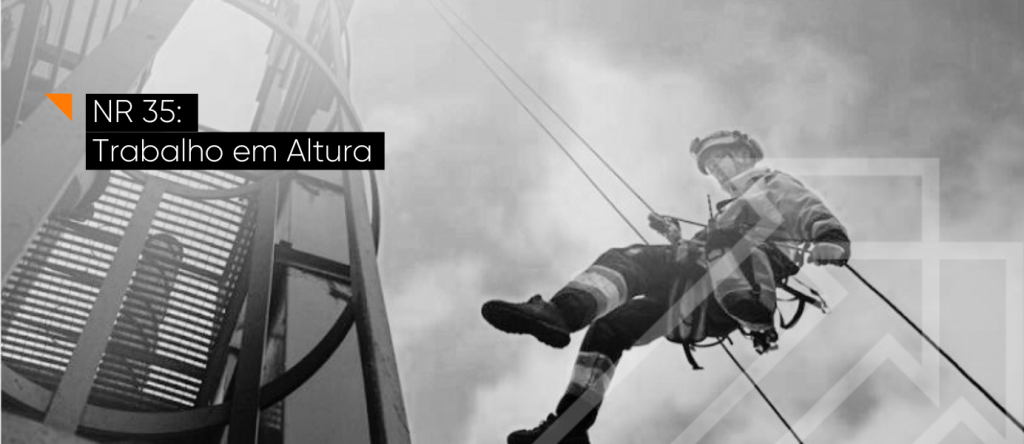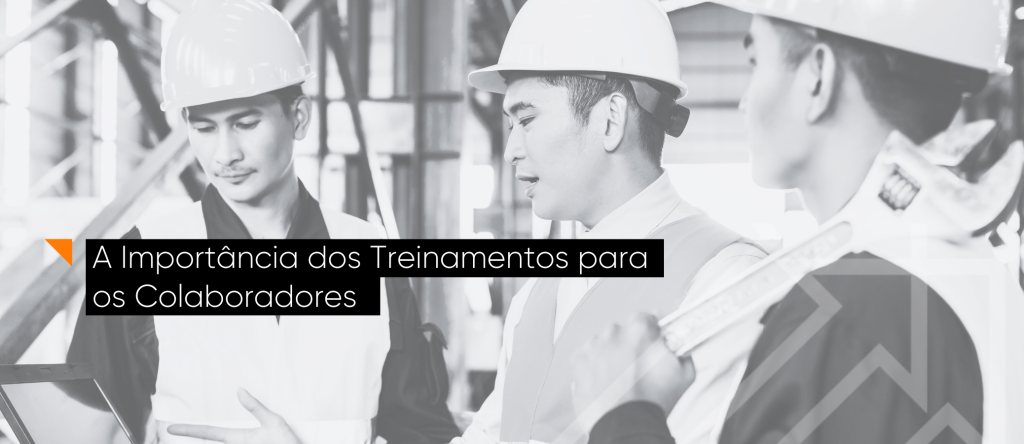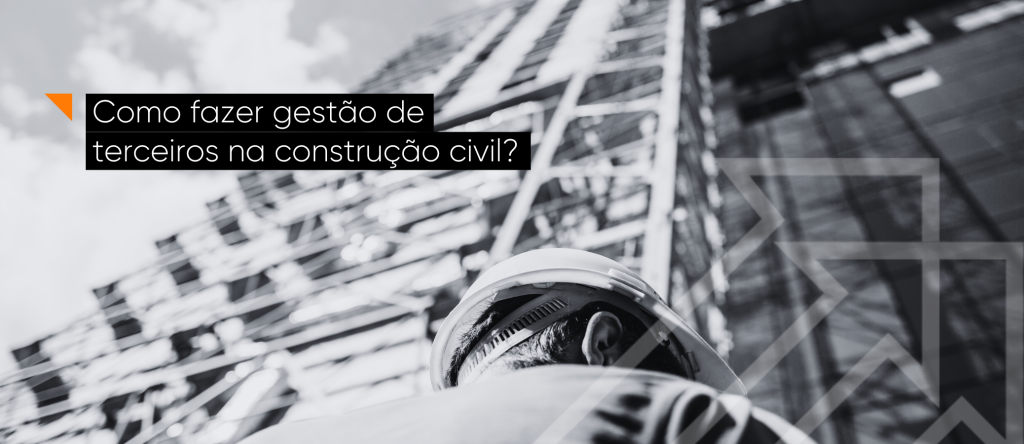Redaction given by MTP Ordinance No. 4.218, of 12/20/2022
Background
NR-35, the Regulatory Standard that establishes the requirements and preventive measures for work at height, involving planning, organization and execution, in order to guarantee the safety and health of workers involved directly or indirectly with this activity, had its last revision due to the suppression of provisions on training, due to its harmonization for all NR’s brought with the revision of NR-1, according to SEPRT Ordinance No. 915, of July 30, 2019.
In December 2022, therefore, the new wording of NR-35 was presented by MTP Ordinance No. 4,218 of December 20, 2022.
Classification
Nothing has changed regarding the classification of the body of NR-35 and the two Annexes that already existed, with the exception of the new Annex III.
NR-35 is classified as a Special NR, which according to item II of Art. 117 of Ordinance No. 672, of November 8, 2021, are rules that regulate the execution of work considering the activities, installations or equipment used, without being conditioned to specific economic sectors or activities.
Annex I of NR-35 is classified as Type 2, while Annexes II and III are classified as Type 1.
According to Art. 118 of Ordinance No. 672, of November 8, 2021:
I – Annex type 1: directly complements the general part of the occupational safety and health regulatory standard, exemplifies or defines its terms; and
II – Annex type 2: provides for a specific situation.
What has changed in NR-35?
In general, there have been changes to the body of the standard and its annexes, in order to bring greater harmonization with NR-01, including having information directed towards it, such as the worker’s duties. In addition, the new text brings greater clarity to the provisions, such as the time for filing documentation, which has been set at 5 (five) years, a clear definition of compliance with NR-07 in relation to the state of health of employees who work at heights, a definition of the possibility of carrying out the PT on physical or digital media and definitions of the procedures for responding to emergency scenarios involving work at heights.
Annex I – Rope Access clearly does not cover caving activities and exempts certified workers from initial and periodic training.
In Annex II – Anchoring Systems, it is made clear that trained workers can perform provisional anchoring provided they are formally authorized by the organization and follow the procedure for selecting anchor points, drawn up by a legally qualified professional.
In addition to these changes, we also have the introduction of Annex III – Ladders.
What about its validity?
It comes into force on
- 03.07.2023 the body and Annexes I and II of NR-35.
- 02.01.2024 Annex III, with the exception of sub-items 5.1.1, 5.2.1.1, 5.2.1.1.1, 5.2.2.1.1 and 5.2.2.3 of Annex III of NR-35.
It is worth remembering that the requirements contained in the sub-items that come into force on 02.01.2024 are not required for: I – fixed ladders already installed when Annex III comes into force; and II – portable ladders already manufactured or in use, which may be used for as long as their useful life lasts, provided they meet the other applicable normative requirements of Annex III.
Below are the main items inserted or added to in this revision:
Field of application
- 35.2.1 The provisions of this Standard apply to any activity with a difference in level of more than 2.0m (two meters) from the lower level, where there is a risk of falling.
Responsibilities of the organization:
- 35.3.1 The organization is responsible for: d) making safety instructions included in the RA, PT and operating procedures available to all members of the work team through the organization’s means of communication which are easily accessible to the worker;
- 35.3.1 It is up to the organization: j) to ensure that the documentation provided for in this NR is organized and filed for a minimum period of 5 (five) years, unless there is a specific provision in another Regulatory Standard.
Workers’ responsibilities:
- 35.3.2 It is the worker’s responsibility to comply with the provisions set out in this standard and in item 1.4.2 of Regulatory Standard No. 01 (NR-01) – General Provisions and Occupational Risk Management, and the operating procedures issued by the employer.
Authorization, Training and Aptitude:
- 35.4.1.1 A worker authorized to work at heights is considered to be one whose health has been assessed and who has been deemed fit to carry out their activities;
- 35.4.1.2 Authorization to work at heights must take into account: a) the activities to be carried out by the worker; b) the training the worker has undergone; and c) the clinical aptitude to carry out the activities;
- 35.4.1.3 Authorization must be recorded in the employee’s functional documents;
- 35.4.1.3.1 The organization must establish an identification system that allows the scope of each worker’s authorization to be known at any time;
- 35.4.2.1 Initial training, with a minimum workload of 8 (eight) hours, must be carried out before the worker begins the activity and include: a) rules and regulations applicable to working at heights; g) conduct in emergency situations, including basic notions of rescue techniques and first aid;
- 35.4.3 Training must be given by instructors with proven proficiency in the subject, under the responsibility of a qualified or legally qualified occupational safety professional;
- 35.4.4 It is up to the organization to assess the state of health of employees who work at heights in accordance with NR-07 (Occupational Health Medical Control Program), especially item 7.5.3, taking into account pathologies that could lead to sudden illness and falls from heights, as well as psychosocial factors.
Planning and Organization
- 35.5.1 All work at height must be planned and organized;
- 35.5.5.1 In addition to the risks inherent in working at height, the RA must consider: e) the selection, inspection, use and limited use of collective and individual protection systems, in accordance with current technical standards, the manufacturer’s or designer’s guidelines and the principles of reducing impact and fall factors;
- 35.5.8 The PT must be issued, in physical or digital form, approved by the person responsible for authorizing the permit, and accessible at the place where the activity is carried out and, at the end, closed and filed so that it can be traced;
- 35.5.8.2 The PT is valid for the duration of the activity, restricted to the shift or working day, and may be revalidated by the person responsible for approval in situations where there are no changes in the established conditions or in the work team;
- 35.6.6 Initial, routine and periodic inspections of the SPIQ must be carried out, in accordance with the manufacturer’s or designer’s recommendations, rejecting elements that show defects or deformations;
- 35.6.6.1 The initial inspection is carried out between receipt and the first use of the SPIQ;
- 35.6.6.2 Routine inspections are those carried out before work begins;
- 35.6.6.3 The periodic inspection must be carried out at least once every twelve months, and the interval between inspections may be reduced depending on the type of use, frequency of use or exposure to aggressive agents;
- 35.6.6.4 Initial inspections, periodic inspections and routine inspections in which the elements of the SPIQ are rejected must be recorded;
- 35.6.9.1.1 When used for fall arrest, the parachute-type safety belt must have an integrated lanyard with an energy absorber;
Emergency and Rescue
- 35.7.1 The organization must establish, implement and maintain procedures for responding to work-at-height emergency scenarios, considering, in addition to the provisions of NR-01: a) the hazards associated with the rescue operation; b) the emergency and rescue team required and its size; c) the estimated time for rescue; and d) the appropriate techniques, specific personal and/or collective equipment and rescue system available, in order to reduce the worker’s inert suspension time and their exposure to existing hazards;
- 35.7.1.1 The organization must carry out an AR of the identified work-at-height emergency scenarios;
- 35.7.3.1 When carried out by an in-house team, the organization must establish the content and workload of the training according to the emergency scenarios.
Glossary
- Pre-assessment: An assessment, not necessarily in written form, carried out in the workplace to identify and anticipate undesirable events and accidents which cannot be foreseen in the risk analyses carried out or which are not considered in the procedures, due to specific situations which are not normal or foreseeable;
- Parachute safety belt: Personal protective equipment used for work at height where there is a risk of falling, consisting of a device attached to the body designed to stop and distribute the forces of a fall at least in the upper thighs, pelvis, chest and torso;
- Ladders for collective use: Ladders for collective use used as a means of access and circulation in the workplaces of buildings and industrial and floating structures, as well as those used in emergency situations;
- Initial Inspection: Carried out between receipt and the first use of the SPIQ component, with the aim of ensuring that it is suitable for the intended application, that it functions correctly, that it meets the regulatory requirements and that it is in good condition;
- Periodic Inspection: Carried out periodically and characterized by a check of the equipment, component or system in order to detect its defects, damage or wear, respecting the instructions of the designer or manufacturer, with a periodicity of no more than 12 months;
- Routine Inspection: Always carried out before starting work, being visual and tactile, carried out by the worker before using the equipment that makes up the SPIQ;
- Proficiency: Competence, aptitude, training and ability combined with professional experience, proven through diplomas, registration in the work book, specific contracts in the area in question or other documents;
- Note: Proven proficiency in the subject does not mean training in a specific course, but rather skills, experience and knowledge capable of teaching the topics covered in the training. The training, however, must be under the responsibility of a qualified occupational safety professional;
- Legally qualified professional: A previously qualified worker who is registered with the relevant professional council;
- Supervision for work at height: This involves providing guidance – in person, semi-presentially or remotely – for safe work at height;
- Temporary anchoring systems: These are those used for a predetermined period of time being removed once the services have been completed, such as the systems set up to carry out a particular task or work on a work front;
- Estimated time to rescue: Estimated time between an undesirable occurrence when working at height, such as a worker falling or being suspended, and the worker being removed or stabilized in a condition that cannot cause any health problems, such as those resulting from inert suspension.
Annex I – Rope access
- 1. Objective 1.1 To establish the requirements and prevention measures for working at heights using the rope access technique.
- 2.3 The provisions of this annex do not apply in the following situations: a) recreational, sporting and adventure tourism activities; b) arboriculture; c) emergency services aimed at rescuing people who are not part of the rope access team; and d) caving activities.
- 3.1.1 Certified workers may be exempt from the initial and periodic training provided for in sub-items 35.4.2 and 35.4.3 of NR-35;
- 4.1.1 In the absence of international technical standards, certification by foreign standards may be accepted provided that the requirements of the European standard (EN) are met;
- 4.3 Equipment and ropes must be inspected in accordance with the manufacturer’s recommendations and the criteria established in the Risk Analysis or Operational Procedure;
- 4.3.3 Inspections must be recorded: a) on purchase; b) periodically; and c) when equipment or ropes are rejected.
Annex II – Anchoring Systems
- 1.Objective 1.1 To establish the requirements and preventive measures for the use of anchorage systems as an integral part of a fall protection system when working at height;
- 2.3 The provisions of this annex do not apply to the following situations: a) recreational, sports and adventure tourism activities; b) arboriculture; c) anchoring systems for collective protection equipment; d) anchoring systems for fixing access equipment; e) anchoring systems for vertical or horizontal transportation equipment for people or materials; and f) anchoring systems for professional caving and caving rescue;
- 3.2.1 The anchorage points of the structural anchorage must be marked by the manufacturer or the person technically responsible, containing: a) the manufacturer’s identification; b) the batch number, serial number or other means of traceability; and c) the maximum number of workers that can be connected simultaneously or the maximum applicable force;
- 3.2.1.1.1 If it is impossible to retrieve the information, the anchorage points must be tested under the responsibility of a legally qualified professional and marked with the maximum number of workers that can be connected simultaneously or the maximum applicable force and identification that allows the test to be traced;4.1.2 The periodic inspection of the anchoring system must be carried out in accordance with the operating procedure set out in item 6 of this Annex, taking into account the design of the anchoring system and that of the assembly, respecting the manufacturer’s instructions and the applicable regulatory and technical standards, at intervals not exceeding 12 (twelve) months;
- 4.2 The anchoring system, when temporary, must: a) meet the compatibility requirements for each installation site in accordance with the operating procedure; and b) have the anchorage points defined by a legally qualified professional or selected by a trained worker in accordance with the selection procedure drawn up by a legally qualified professional;
- 4.2.1 It is up to the organization to formally authorize the trained worker to select the attachment points for the temporary anchoring system;
Annex III – Ladders
Annex III sets out the requirements and preventive measures for the use of ladders as means of access or as work stations when working at height on ladders for individual use. Divided into 5 items, the first two being the objective and field of application, already covered in this paragraph, there are also the following:
- Classification of ladders for individual use:
Classified as vertical fixed ladders, portable backrest ladders and self-supporting portable ladders;
- Planning, Training and Authorization:
Planning must include risk analysis, which will only be waived, as will the individual fall protection system, when using ladders as a means of access to heights of up to five (5) meters, provided that no additional risks of falling with a difference in level are identified in a previous assessment.
Workers must be trained in accordance with the contents of chapter 35.4 of NR-35. It should also include the safe use of ladders for individual use. When the risk analysis is waived, training and authorization to work at heights are waived, and the worker must be given basic safety instructions on the use of ladders for individual use.
- Requirements:
- Be manufactured in accordance with current national technical standards under the responsibility of a legally qualified professional;
- Be designed by a legally qualified professional, with reference to current national technical standards; or
- Be certified in accordance with technical standards.
- It should be noted that the SPQ’s (fall protection systems) need to be inspected, as described in item 35.6.2 “f” of NR-35. So too must the SPIQ’s (individual fall protection systems) in accordance with sub-item 35.6.6.
- Ladders also need to be inspected, as described in sub-item 5.1.2 “c” of Annex III.
- In order to ensure that inspections are up to date, it is necessary to have a system for inspections, where all information can be recorded and tracked throughout the life of the equipment. For this, GAP SISTEMAS has a solution literally in the palm of your hand, GEEQUIP – Software for Equipment and Inspection Management.




